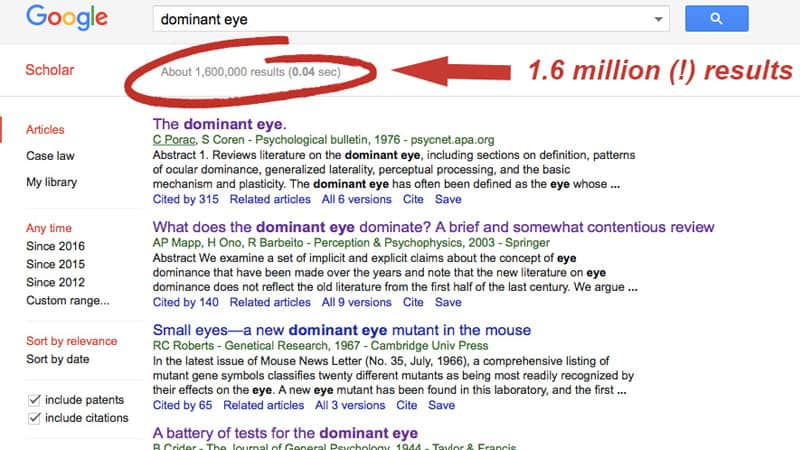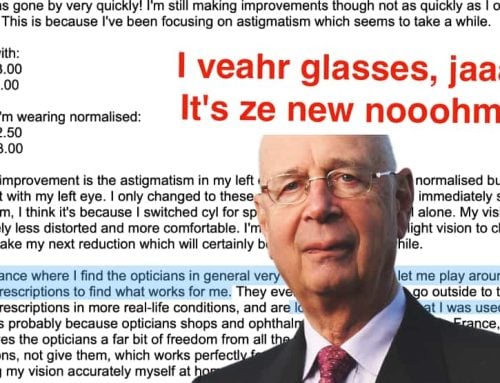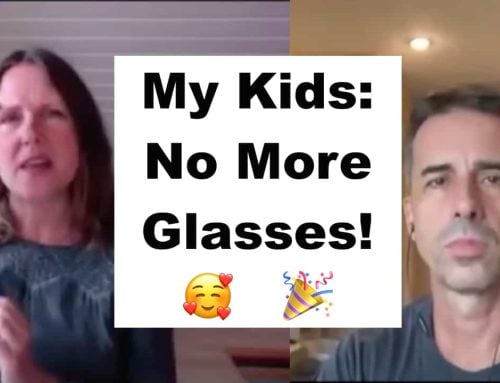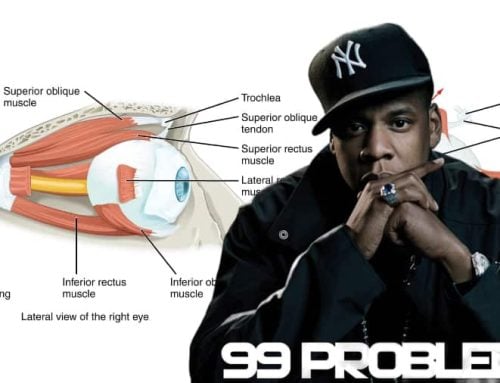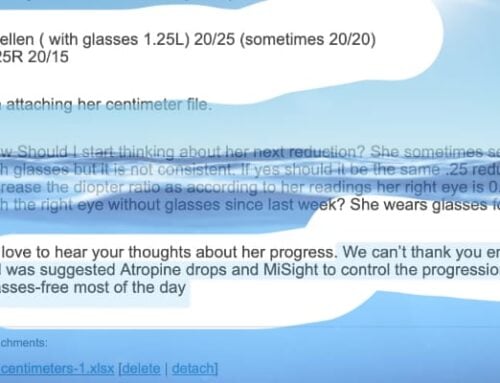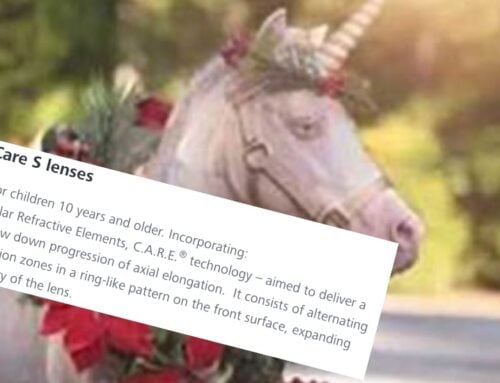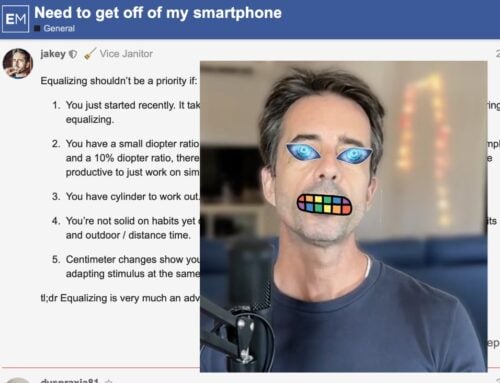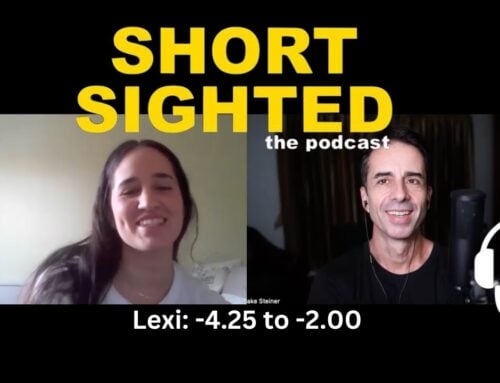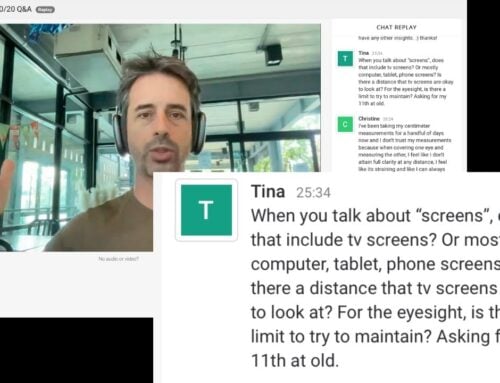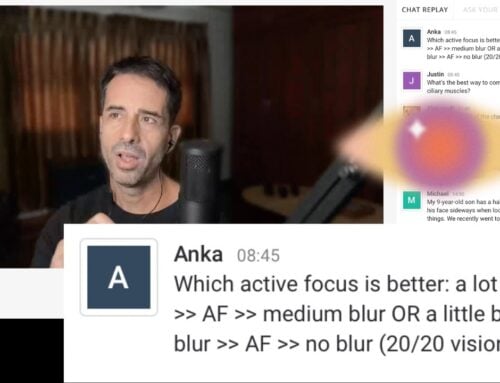Jakey needs a deep breath before starting on topics like ocular dominance.
We’re friendly to mainstream optometry. Om, shanti, ommm. Natural myopia control, it’s just another way to look at myopia. There’s nothing wrong with cranking that phoropter like it’s the wheel at the titanic, giving everybody every last ounce of mad crazy sharpness. Nothing wrong with it at all. It’s just … old school. The ideals from days long past. Hey if you’re into that, old school, that’s totally cool. Crank it.
Om. Shanti. Deep breaths.
(If you’re old school mainstream, don’t read this next part.)
It’s fu&#-ing stupid, you know? Whenever I see R:-1.25 L:-1.50, somebody might as well have written hello, I’m an idiot, on the prescription pad. Hey there, chief, so tell us what you remember about ocular dominance from school. How does that work again, the dominant eye? Is that extra 0.25 really justified? Is it, or are we just blindly overcompensating for perfectly balanced natural biology?
See how easily I head off into rant mode? You deserve a better myopia spokesperson. But let’s take a quick step back, let me explain ocular dominance first:
Ocular dominance – Wikipedia, the free encyclopedia
Make sense?
Just like many other parts of your biology, having two of the same doesn’t mean they’re equal and the same. This happens by design.
Now if you’re going to arbitrarily and clumsily enforce total equality, why not also make everyone who is right handed do everything with the left hand? Left leg? Should we prescribe something to people who are left handed? Surely there is something we could sell them, to help them with their, uhm … help me out doctor, what is it? Condition?
That’s right. Pesky ocular dominance. Let’s pave right over that, see what happens.
Now you say, Jake. You’re really not doing so well today, being optometry friendly. These guys don’t know, Jake. Don’t call them idiots for doing as they were taught in school. Be positive, friendly, kindly eye guru like, and explain how ocular dominance should be respected when dispensing lens prescriptions.
I should. All right.
(Safe to read again from here, for the old school main stream optometrists).
Ocular dominance occurs naturally and even if we don’t have a clear consensus on its purpose, we can probably safely agree that it’s part of the biological design for a reason. When you observe ocular dominance in a customer, and it’s their first lens prescription, consider maintaining an equalized, no-ratio course of prescription action. Prescribe according to the lower end of the bifocal requirement for 20/20 vision. In the traditional -1.50 / -1.25 scenario, you can just go bifocal -1.25, observe that the customer sees 20/20 clearly, and call it a day.
It’s perfectly all right to respect naturally occurring difference between left and right eye. If in doubt, a quick visit to scholar.google.com, and the 1.6 million results on the subject of ocular dominance may help put lingering doubts to rest. Yes, old school prescription teachings are heavy handed. Yes, it’s ok to take a step back, look at the biology not as the enemy, and a apply a lighter, more considered approach to lens prescriptions.
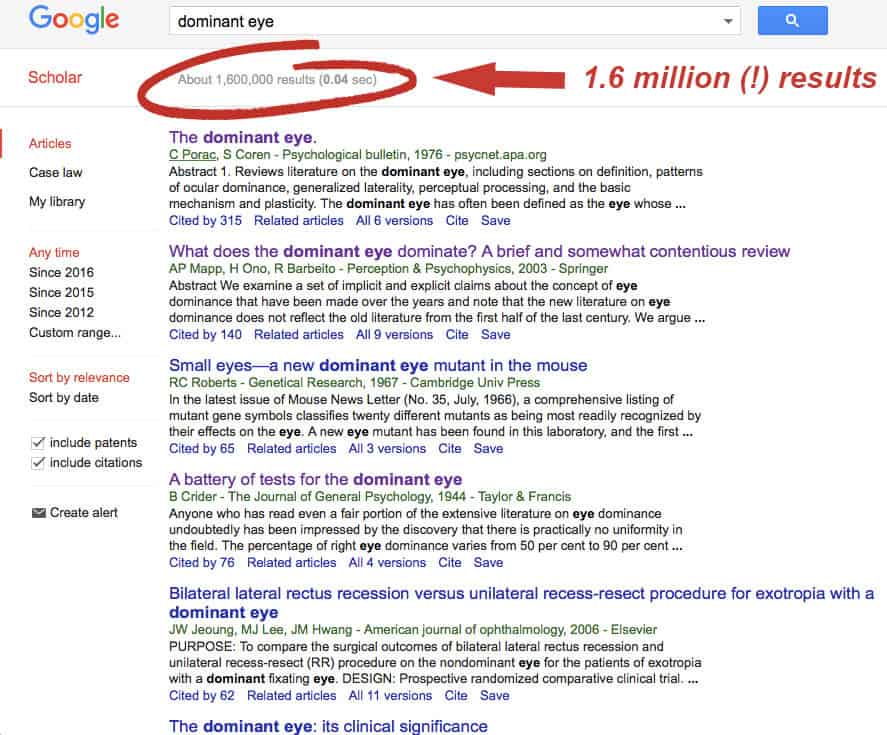
<3 Science. <3
How’s that? Better, more calm and inclusive?
It’s certainly nobody’s fault, the state of affairs today. Just think of it as a bit old school, a bit less sophisticated, a bit less refined than options we have available today.
On another note, what happens when you don’t consider ocular dominance and simply overprescribe for a “weaker” eye?
The ratio tends to grow. That initial 0.25 gap is eventually going to double into a half diopter, and as progressive, lens-induced myopia takes it’s course, that gap may continue to increase. This increases lens dependence, can be a contributing factor to many other symptoms such as headaches, eye fatigue, and a difficulty adjusting to future prescriptions. All these issues are well avoided by taking a stand against prescription complexity from the start.
And for the record, lots and lots of endmyopia students have lowered their diopter ratio successfully. Many advanced students even completely equalized their prescriptions, while being able to read eye charts consistently with both their left and right eye. Lens-induced myopia caused high diopter ratio is reversible, though it’s just best to avoid it from the start.
For you video fans, I put this together in a quick, casual narrative:
Give it a little thumbs up, subscribe to the channel if you haven’t yet. Oh and what’s that first part of the video? Super secret admissions caught on film, about what really goes on behind closed doors in the optometry profession. It’s ugly, shocking, and should be illegal in parts – but to not get the wrong guys in trouble, I unfortunately can’t post it online.
Boo, I know. Just realize that I’m on your side, and most of what we talk about here at endmyopia is to combat some of those somewhat sinister, profit-minded forces, and bring you real knowledge and help with correcting your own myopia.
Cheers!
-Jake

